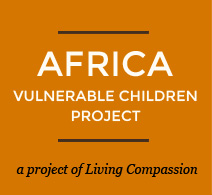Our morning began with errands in town, banking and purchasing chitenge for our sewing cooperative. In our pursuit to support local business, we asked the shopkeeper why there is so little fabric available from Zambia. He told us there is only one remaining factory in Zambia, and even that one “is open for a few months and then closed for months at a time.” Heartbreakingly, this beautiful native cloth has been farmed out to other nations to produce. Mama Africa, one of the major brands of chitenge, is made in India and Pakistan.
Chitinge shopping
Before continuing on to Kantolomba we had a working lunch with Theresa to gather our thoughts and ideas on how best to use the next seven days. After getting an update on the Living Compassion team and hearing about the numerous bouts of malaria, it became obvious that the prevention of this deadly disease needs to be high on the list.
Lunch meeting
Driving the well-known route to Kantolomba, noticing familiar faces and the diminished cries of “musungu” (white person)—a sign that people are very used to us passing by—we feel again and again more similarities than differences and a sense of being in just another place to call home.
We were welcomed with the usual wonderful song and dance. The team was just finishing lunch, and Martha, the newly hired accountant, was busy grading a finance test the members of the cooperative had completed that morning. Fun to see them getting an education in areas that they can use in their everyday life.
A joyful welcome by the Living Compassion team
Martha grading tests
Touring the property with Theresa, we stopped in at Brenda’s house, who is one of the team who lives on the Living Compassion property. In our lunch discussion we found out that Brenda’s youngest son, Patrick, had been sick with malaria. In asking if they had a mosquito net, the reply was no, they have no way to hang it. Inside Brenda’s two-room house, we noted that the ceilings have wood rafters, making the attachment of the mosquito netting very possible. The family’s only bedroom contained some old chitenge cloth as the bedding—no mattress or even mat to sleep on.
Brenda’s family’s bedroom
Theresa, in discussion with Brenda in her living room on the subject of malaria prevention, relayed to us that Brenda’s salary is shared among a very large extended family (she is the primary bread-winner) thus netting had not been a priority. We found out that many families acquire a bed net from government clinics for little or no cost when a woman is pregnant, but many sell them off to fisherman who use them as fishing nets. The immediate need for income often outweighs the long-term benefits of the net. This further deepens our commitment to explore the relationship between malaria prevention and economic opportunity.
Brenda, her daughter and Theresa discussing malaria in Brenda’s living room
Upon leaving Brenda’s house, JoAnne, her neighbor, asked Theresa in Bemba why we would visit Brenda’s home and not hers? Theresa translated and we replied, “We would love to see her house.” JoAnne and three of her sons welcomed us in. As we noticed the “creature comforts”—small television, cassette player (both circa 1970s), sofas, chairs and little touches that make a home feel warm—JoAnne beams “We have so much more than we did a year ago because my husband is part of the Living Compassion team.” Theresa tells us that when they first moved into this home they literally had nothing.
Joanne with her children
Joanne and Theresa
Peeking into the house to see the action
The television and cassette player—since Joanne and Ruben (her husband who is part of the cooperative) live on the Living Compassion property, their home has electricity.
After our tour we gathered our sewing team, Georgina, Nellie and Ethel (Josephine is out with malaria). Showing the baby blanket samples we brought, we explained the opportunity to partner with Jasmine, the Zambian native living in Canada who wishes to have her product made by a cooperative in Ndola. Theresa described the possibility as “a small crack that has been opened in a door, and a chance for the door to become much more open and put our sewing co-operative on the world wide map.” Together we planned out what would be needed to take the steps towards creating the samples to bring home with us so they can be part of the business plan Jasmine will present as she begins to set up her business.
Jen explains Jasmine’s proposal
While the sewing team met, the rest of the group was busy shucking kernels from cobs of maize. The cooperatives first harvest of corn is just in, and many rooftops full of drying ears reveal its success.
Corn on the rooftops
A very fun team effort
Pouring it in sacks to store
Jen gets a lesson (Can you tell who the photographer is?? We promise to try to get more photos of Tracey tomorrow)
Jen takes a break to see if she would be able to pass the finance test. Iffy, especially if it were in Bemba!
On our way out for the day, it was fun to pass by the multitude of activity of the project: the women roasting the groundnuts (peanuts) that they will then grind into peanut butter for tomorrow’s lunch, the chitenge already washed and drying in preparation for the start of the baby blankets project, and some “old-timers,” children who have been in the program since preschool and are now in grade 4!
Cooking over charcoal braziers
A colorful clothesline
Our old friends
